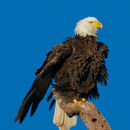More info on this topic. This species is known to occur in association with the following plant community types (as classified by Küchler 1964):
More info for the terms:
bog,
forest,
woodlandK001 Spruce - cedar - hemlock forest
K002 Cedar - hemlock - Douglas-fir forest
K003 Silver fir - Douglas-fir forest
K004 Fir - hemlock forest
K005 Mixed conifer forest
K008 Lodgepole pine - subalpine forest
K011 Western ponderosa forest
K012 Douglas-fir forest
K013 Cedar - hemlock - pine forest
K014 Grand fir - Douglas-fir forest
K015 Western spruce - fir forest
K016 Eastern ponderosa forest
K017 Black Hills pine forest
K018 Pine - Douglas-fir forest
K019 Arizona pine forest
K020 Spruce - fir - Douglas-fir forest
K021 Southwestern spruce - fir forest
K022 Great Basin pine forest
K023 Juniper - pinyon woodland
K024 Juniper steppe woodland
K029 California mixed evergreen forest
K030 California oakwoods
K034 Montane chaparral
K037 Mountain-mahogany - oak scrub
K038 Great Basin sagebrush
K092 Everglades
K093 Great Lakes spruce - fir forest
K094 Conifer bog
K095 Great Lakes pine forest
K096 Northeastern spruce - fir forest
K097 Southeastern spruce - fir forest
K098 Northern floodplain forest
K101 Elm - ash forest
K103 Mixed mesophytic forest
K106 Northern hardwoods
K107 Northern hardwoods - fir forest
K108 Northern hardwoods - spruce forest
K113 Southern floodplain forest

